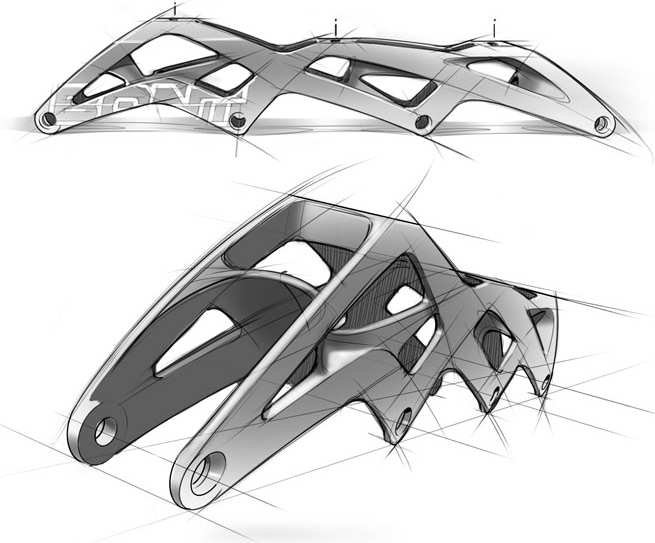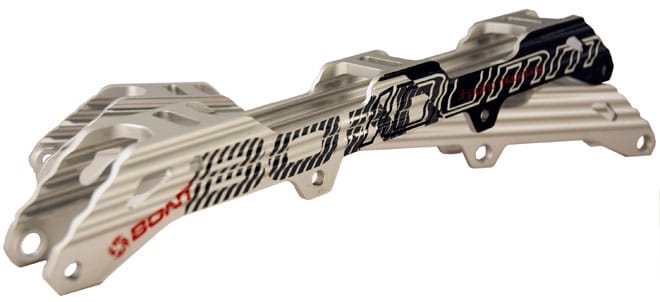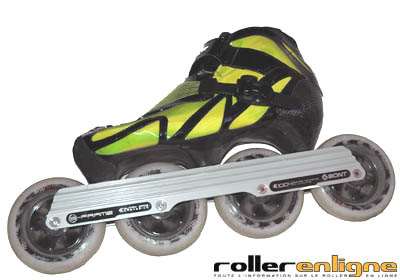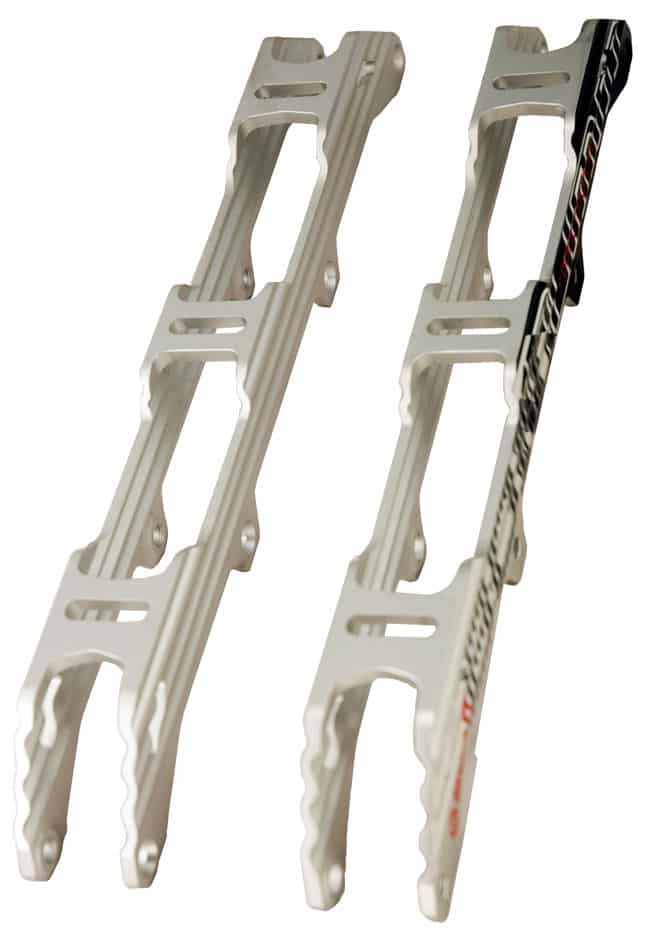2-point or 3-point Frames? Pros and Cons
Two conceptions of frames/boots are confronting each other on the market, the 2-point and the 3-point frames. Bont, the Australian brand, imposed its touch in patenting the 3-point Frames several years ago. But what are the main differences between the 2-points and the 3-points? Balancing test...
Par alfathor

 The 3-point conception would have been developed by Inze Bont as an answer to the increase of the wheel diameter during the last ten years. 100mm wheels were a challenge for skate manufacturers. They had to find solutions to build longer and more solid frames, without weighing down or raising the whole set-up.
The 3-point conception would have been developed by Inze Bont as an answer to the increase of the wheel diameter during the last ten years. 100mm wheels were a challenge for skate manufacturers. They had to find solutions to build longer and more solid frames, without weighing down or raising the whole set-up.
At first a couple of 4×100 models broke under the new physical constraints. Then there was the second wheel, scraping under the boot, and causing bad overheating for the skater’s foot.
Adding a 3rd central fixing point helped solving these problems. It proved to be particularly useful for powerful skaters, as well as in downhill tracks where frames work more with twisting. If the industrial version of the 3-point frame belongs to the Australian firm Bont, several manufacturers had thought about that very concept at the same time. Let’s remember Diabolik and Renard, who briefly proposed these products before being forced to stop, because of Bont’s patent.
 Is the set-up higher?
Is the set-up higher?
There is no real difference as, in every case, you have to put the wheels under the boot… and they are not extensible! Their low height, 33.5mm from the top of the frame down to the center of the axles, is due to the fact that the height of the boot compensates the lowering of the frame.
Weight
According to the models on the market, the weight varies between 90 and 125g (for wheel diameter of 90 or 100mm). They are made of 7075 T6 aluminum or of magnesium depending on the versions. If you rely only on the figures, then the gain is considerable… and yet finally, it’s probably six of one and half a dozen of the other. If you lower the frames like Bont, you do gain some weight out of the frames as they are made with less material. On the other hand, the boot has to be higher to compensate, it thus is made with more material and it weighs heavier.
The reduction of the production cost
In simplifying the design of its frames, Bont reduces his production costs all the more. The frames have bridges of the same height, and simple lines which require less production time and less material… so that there are very competitive products on the market.
What about compatibility?
If most of the 2-point Frames can fit to every type of skates (still check the axle spread: 165 or 195mm), it is not the case for the 3-points which you can only fix on Bont 3 points!
And what about reactivity?
We would be more in favor of the 3-point frame. The boot and the frame have more fixing points uniting them together, so that they both keep their shape better. It also gives more precision.
 An old Diabolik 3 point frame >
An old Diabolik 3 point frame >
A different comfort
You’ll quickly realize that the adding of a 3rd fixing point increases the transmission of vibrations. On a damaged ground, you’ll feel the slightest rough patch.
The set-up
The 3-point frames can be quickly taken off without having to remove the wheels – which is not common with 2-point frames.
Security
With a 2-point frame you have… two fixing points, against 3 for a 3-point frame. Thus you have fewer chances to lose your frame with a supplementary fixing point: if a screw takes a powder, you still have two left!
And what about performance?
The 3-point frames don’t seem to bring significant performance improvements. Bont proposes to the manufacturers to pay a license for using the 3-point technology. For the moment, only Solvein bought it…
Interview with Alexander Bont

 How do you explain that in fact the 3 point frames are not very widespread?
How do you explain that in fact the 3 point frames are not very widespread?
We have a patent covering the US, Europe, China, South Korea and Taiwan. We have proposed licenses to manufacturers but we had problems. We have thus decided to keep this innovation for Bont only. A new variation of the 3-point frames should see the light in 2010.
Is it better for sprint? For long distance?
The main advantage is its solidity. These frames are a lot more resistant, and we have had almost no returns. The bending of the boot and frame is reduced, so that all the power is transmitted to the ground. This can fit to any type of skating. And last but not least, the 3 fixing points are equally spaced out in-between the wheels, so that you can take off the frame without removing the wheels.
Useful Links
Are 3-point Skates Better? (Bill Begg sur Inline-Planet)
www.bont.com
Translated by Close Yr E’s
Photos : Alfathor
